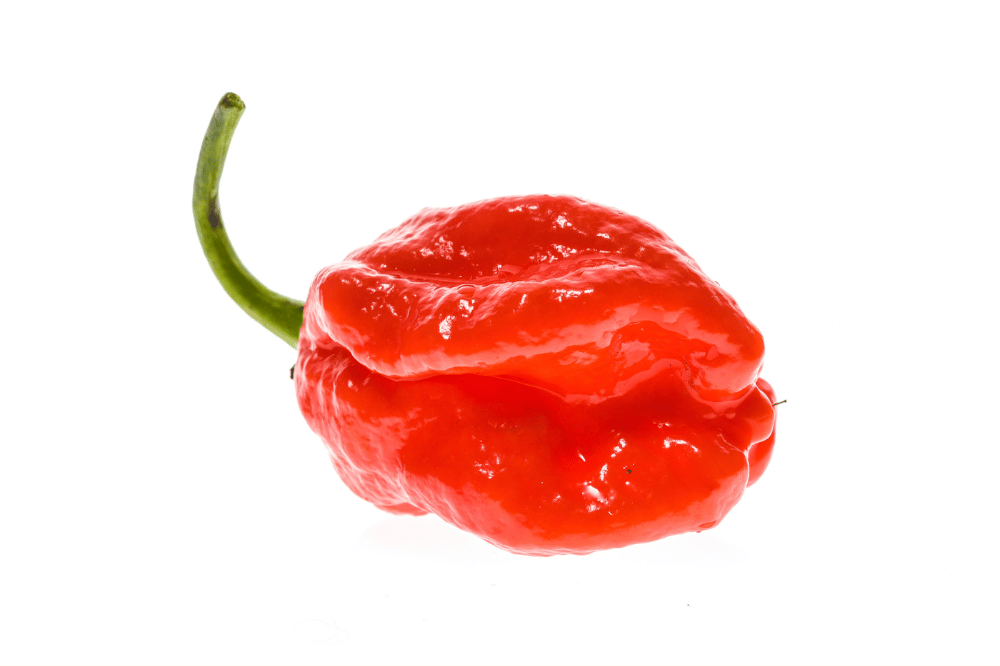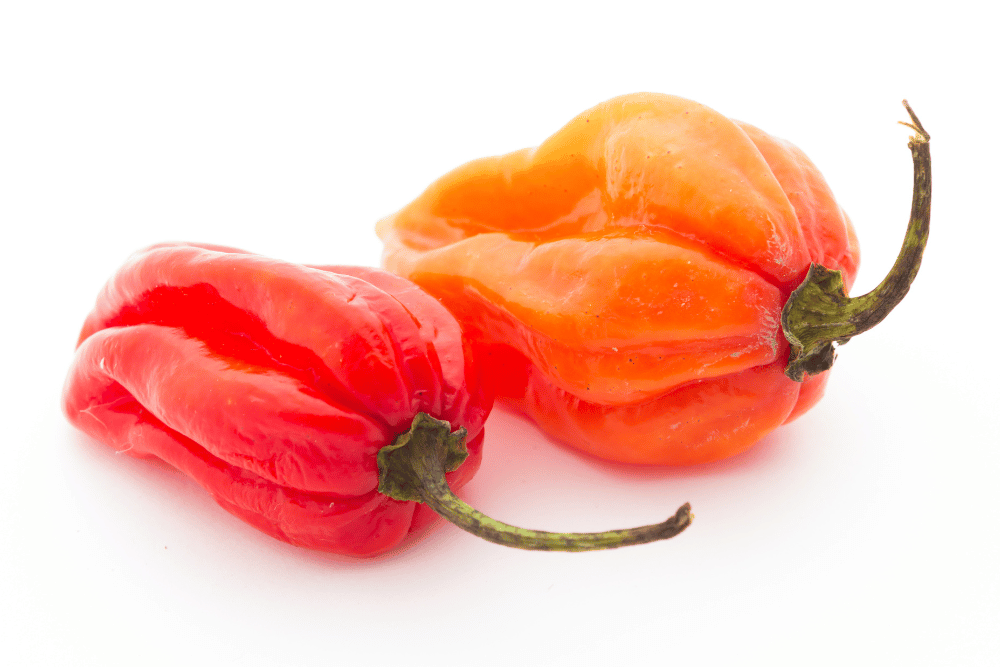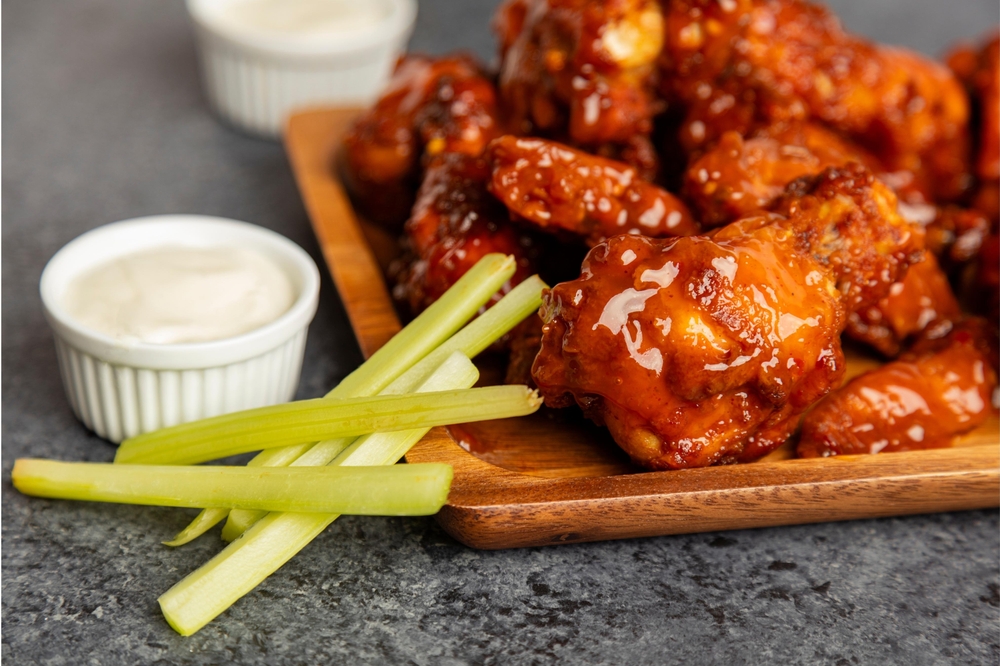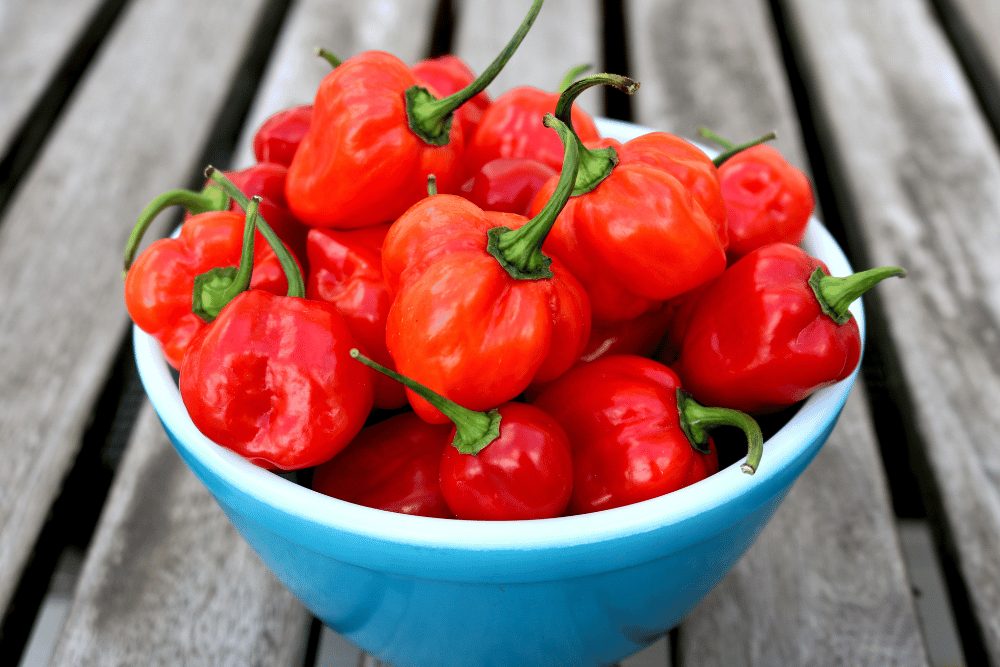If you think all habanero peppers are created equal, you're mistaken. The Caribbean red habanero makes its orange cousin seem mild by comparison. It's two to four times spicier than the orange habanero—coming in just below the bhut jolokia (ghost pepper) on the Scoville Scale. You'll be rewarded with unmatched flavor if you can handle the heat.
What Is A Caribbean Red Habanero Pepper?
The Caribbean red habanero is a species of Capsicum chinense that has gained popularity in recent years. Its intense heat has earned it a spot on the world’s hottest peppers list.
Habaneros, like most chilis, can trace their roots back to South America. After years of growing and cultivation, several cultivars of the habanero have emerged, among them the Caribbean red. Mexico is the primary grower of habaneros, including the Caribbean red, particularly along the Yucatan peninsula.
Caribbean reds and all other species of habaneros are now routinely grown in many areas, including North America and the Caribbean. This red, wrinkled habanero variety is an easy-to-grow choice for backyard gardeners who love heat.

What Do Caribbean Reds Taste Like?
It’s not all scorched tongues and shock value, however. Caribbean red habaneros also offer a unique flavor profile.
Once the heat fades, an unmistakable smoky flavor compliments the fruity, citrusy undertones. This makes them an excellent choice for different recipes supporting their spice level.
What’s The Difference Between A Caribbean Red And An Orange Habanero?
The orange habanero is the most common and easily found habanero variety. Although super spicy in its own right, it still pales compared to the Caribbean red.
Orange habaneros and Caribbean reds are very similar. They share traits like:
- Similar flavor profile
- Size
- Preferred growing conditions
- Wrinkled appearance
The two primary differences between the orange habanero and Caribbean reds are:
- Heat
- Color

How Hot Is The Caribbean Red Habanero?
Caribbean red habaneros are among the super hot pepper varieties. They rank 4th on the Scoville heat scale depending on the measured individual pepper. That puts them at 300,000-500,000 Scoville heat units (SHU).
To better understand how the Caribbean red stacks up next to other well-known peppers, consider the following:
- Carolina reaper, 2,000,000+ SHUs
- Trinidad scorpion, 2,000,000 SHUs
- Bhut Jolokia (ghost pepper), 1,000,000 SHUs
- Caribbean red habanero, 300,000-500,000 SHUs
- Orange habanero, 100,000-350,000 SHUs
- Cayenne pepper, 30,000-50,000 SHUs
- Jalapeno pepper, 2,500-8,000 SHUs
What To Do With Caribbean Reds?
For some people, Caribbean reds may be above their spice tolerance. But for those who like spicy food, the flavor of Caribbean red habaneros can add a great deal to many dishes.
In addition to salsas and hot sauces, Caribbean reds can be added wherever hot peppers are called for – be sure to modify the quantity. When it comes to the Caribbean red habanero, a little can go a long way.
If you can handle the heat and want to incorporate these super hot peppers into your cooking, try:
- Caribbean red habanero pepper jelly
- Mango-Habanero hot sauce featuring Caribbean red habaneros (a must try on chicken wings!)
- Dehydrating and grinding them to create your chili powder
Note: Whenever handling peppers, especially of this heat level, exercise caution. Gloves and protective eyewear are advisable. If cooking or heating in any way, you should also wear a face mask. Oils and fumes from this blazing chili pepper can be dangerous and cause extreme skin, eye, and lung irritation.

What Color Habanero Is The Hottest?
Although all habaneros are hot, red habaneros are undoubtedly the hottest.
In general, a pepper’s heat correlates with deeper, richer color. The longer a pepper remains on the plant, the hotter it will become. So, if you’re a home gardener and want the height of heat from your Caribbean reds, let them ripen on the plant for as long as possible.
Where To Buy Caribbean Red Habaneros
You can find orange habaneros at nearly any grocery store. Caribbean red habaneros can be more elusive.
Some grocers and specialty stores carry at least a small number of Caribbean reds, but certainly not all of them. Before making an out-of-the-way trip, you should call ahead to see if they’re in stock.
Can You Grow This Hot Pepper?
All varieties of habaneros are easily grown by home gardeners.
You can find habanero pepper seeds and pepper plants at local nurseries or online.
If growing from seed, you can sow indoors as early as January. Germination will occur within 7-10 days of planting.
Once the seedlings emerge, they’ll need to be kept warm. Seedlings can be transplanted outdoors when they have eight sets of leaves and at least two weeks after the last spring frost.
Habanero plants need full sun and warm temperatures in the outdoor garden, with nighttime temperatures no lower than 60 degrees Fahrenheit.
Caribbean reds, like all habaneros, need well-drained soil and nitrogen-rich fertilizer while growing. Once flowers begin to form, fertilizer with lower nitrogen will help encourage pepper growth.
Substitutes For Caribbean Red Habaneros
If Caribbean red habaneros are unavailable, other peppers can do the trick.
- Orange Habanero. They are very similar in flavor but with a lower spice level.
- Scotch bonnet. Scotch bonnet peppers are the best choice since they are close to the same spice level and have a similar fruitiness reminiscent of the Caribbean red.
- Serrano peppers. Serrano’s have a slightly more vegetal flavor and aren’t quite as spicy. They can make a suitable substitute when necessary, however.
- Cayenne pepper. Close in heat level, but slightly different flavor profile.

